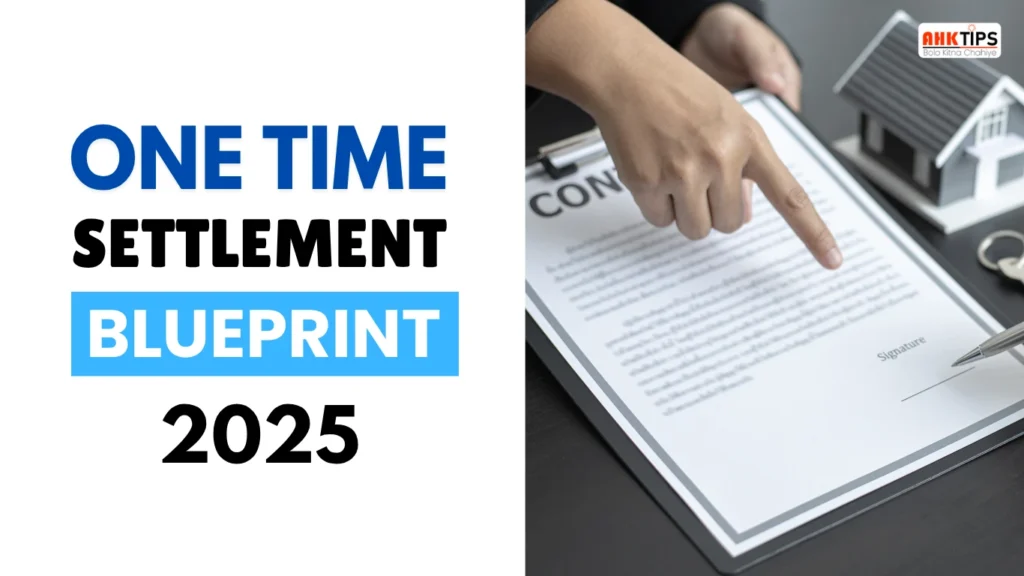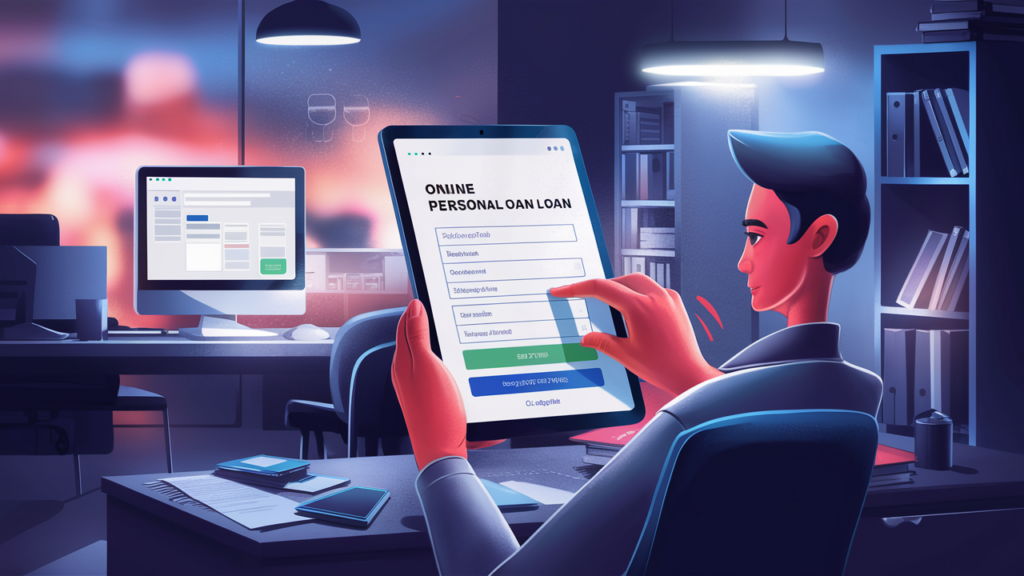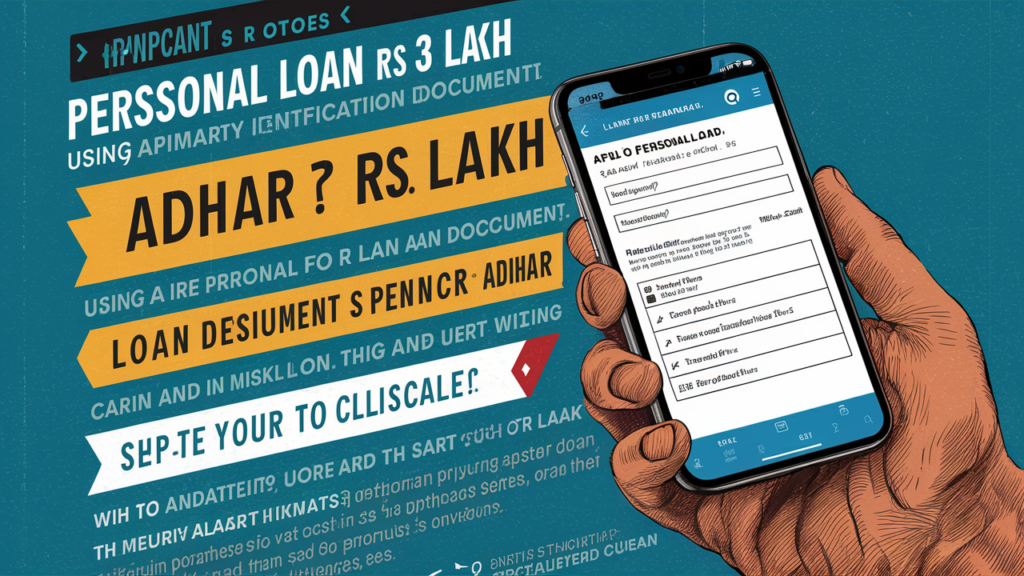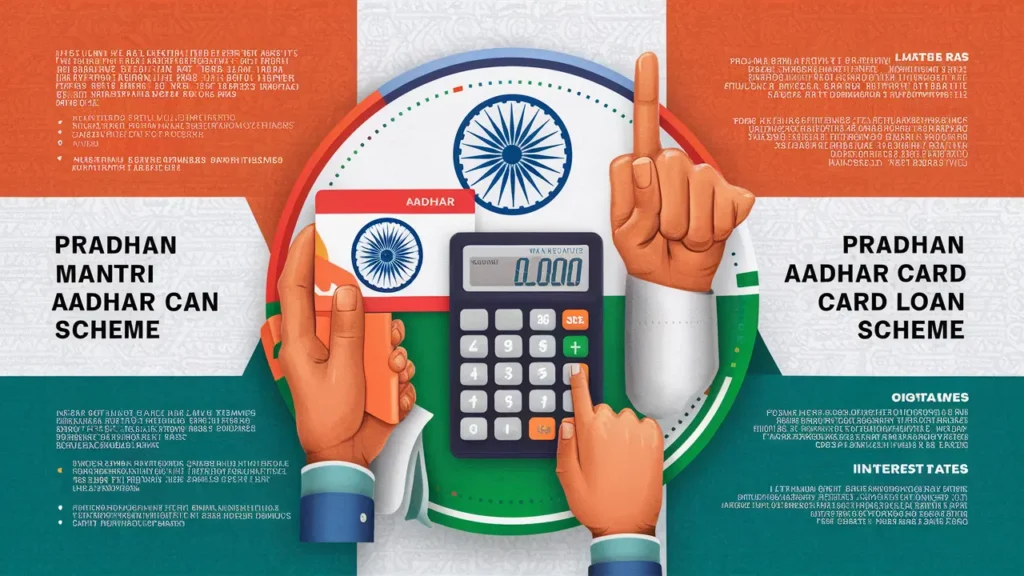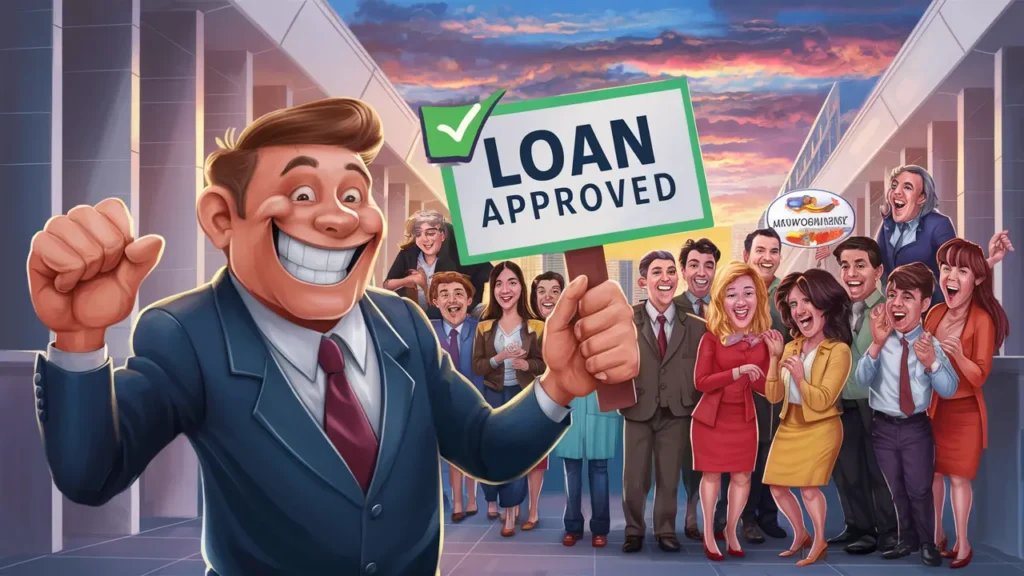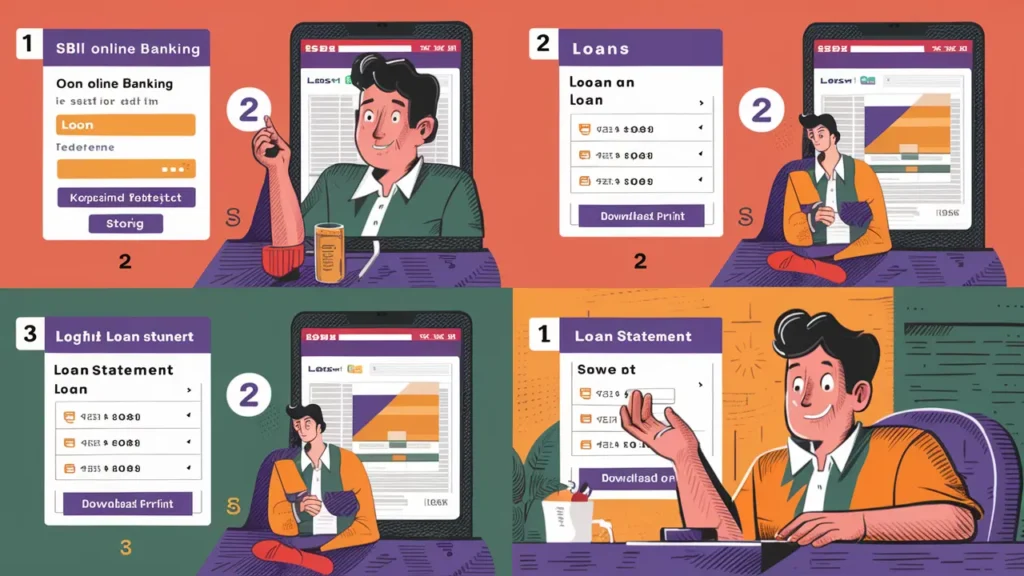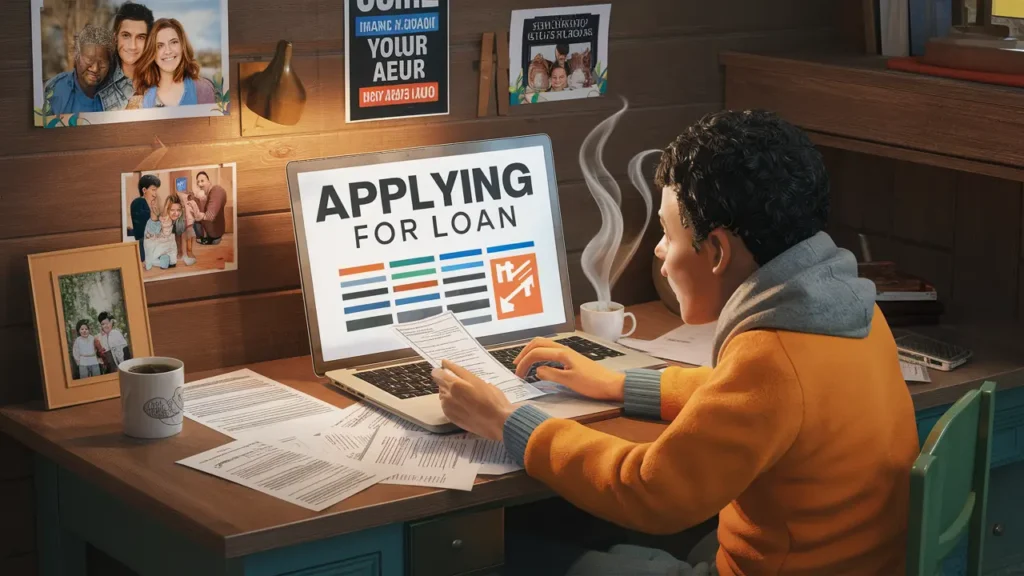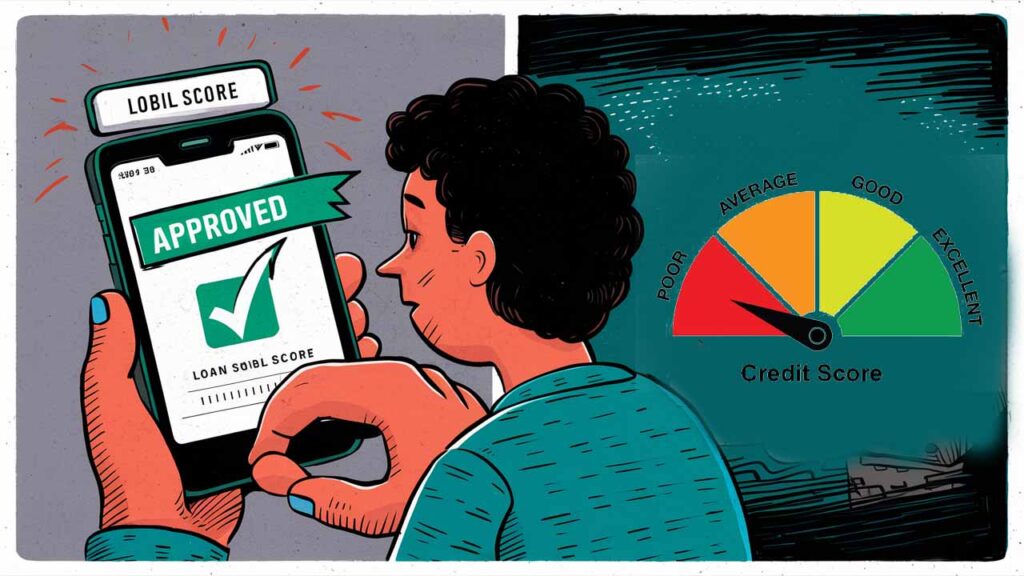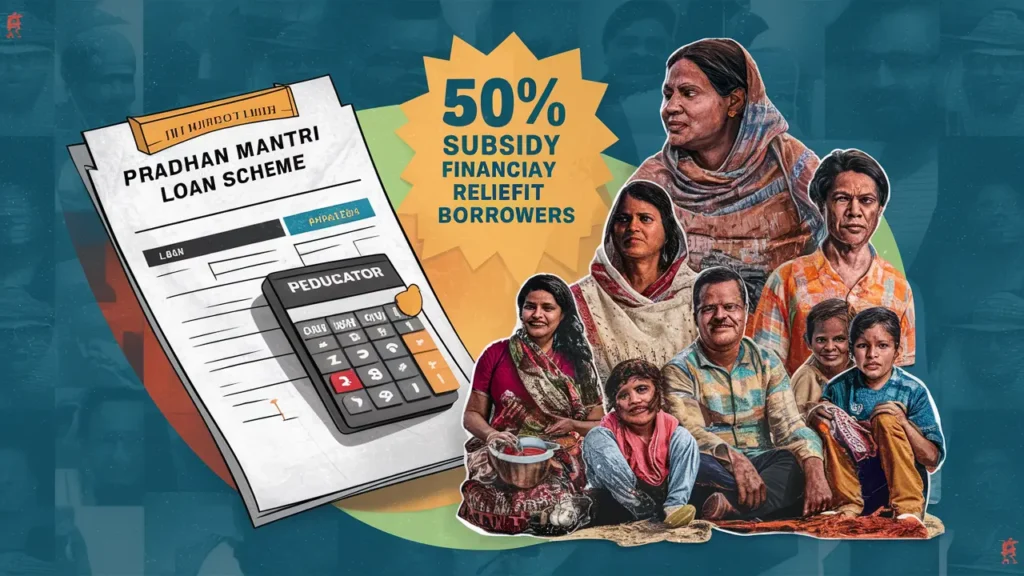Summary
The One Time Settlement Blueprint 2025 is a debt relief program. It helps individual borrowers and small businesses who can’t repay their full loans. Borrowers can settle overdue loans by paying a reduced lump sum. This scheme supports those in financial distress due to defaults or legal notices.
This scheme is a one-time remedy for borrowers to settle with the bank. It follows RBI guidelines. The completion of the OTS gives legal and emotional protection. It helps close debt faster. Plus, it provides a fresh start by stopping interest and overdue payments.Another little-known benefit is that it lets borrowers negotiate with banks. This option is better than selling assets to settle old or abandoned loans.
Discharged loans can affect credit scores for a short time. But they assist borrowers in achieving financial recovery. Borrowers should avoid common mistakes like poor documentation or not negotiating. Some believe OTS is bad. But restructuring or debt consolidation can help improve lending relationships. When used with care, OTS can provide financial relief and support a fresh start.
Introduction
The One Time Settlement Blueprint 2025 is a great way to find relief from overdue loans. It lets you settle debts by paying less than what you owe instead of the full amount. This program helps those facing financial stress due to job loss or other hardships.
It’s not a loan waiver; it’s a chance to settle your debts, reduce stress, and avoid legal issues or losing your assets. The Reserve Bank of India (RBI) supports this program, ensuring it’s 100% legal. This program helps you close loans faster.
It’s for small businesses with falling revenue or individuals managing many EMIs. You can then focus on rebuilding your finances and cash flow. Plus, you can take advantage of this in 2025, making it a smart choice for managing and recovering from debt.
How the One Time Settlement Blueprint 2025 Can Help You Eliminate Debt Fast
What Is the One Time Settlement Blueprint 2025?
The One Time Settlement Blueprint 2025 is a methodical debt relief program initiated to help debtors in overdue loans. You can negotiate with your lender(s) to close the loans by paying a decreased lump sum amount. The program is particularly useful for Individuals and Small Businesses who are in financial duress.
The program is framed under RBI guidelines and banking system reforms to address non-performing assets (NPA) and interest to borrowers an opportunity to escape the debts trap. Understand this is not a loan waiver, but a current chance to cut dues fast, legally, and with little affect to future financial planning.
Why the Blueprint Works in Fast Debt Relief
The One Time Settlement Blueprint has a pragmatic approach on eliminating dues quickly while causing least amount of inconvenience to both lender and borrower to reach a fair settlement. Here is what works:
Close The Loan Account Quickly
The One Time Settlement Blueprint has the advantages of being quick to close off outstanding loan accounts. Rather than paying full overdue amount with interest and penalty over time, the borrower pays the negotiated amount in one go to close loan account and end their loan immediately.
Reduced Financial Burden
A settlement reduces the total sum due, which reduces the financial strain on the borrower for immediate relief, giving them a basis to plan their finances without the pressure of EMIs and penalty payments.
Legal and Transparent
This blueprint is a strict RBI known process and the result is achieved through governance. Approval and documented process means that once cleared, the borrower will not face financial surprises or immoral actions by recovery agents. Borrowers can negotiate the settlement directly with banks or through regulated settlement advisors.
The Borrower Now Has Clarity,
Once settled, the account is classified as settled on the borrower’s credit reports. Settling the account will impact the score short term but enable future repair, as the account is stopped being counted as a “default” on the consumer credit report.
Who Should Use the One Time Settlement Blueprint 2025?
Ideal for Borrowers in Financial Distress
If you have lost income, have too many EMIs to manage, or are in default of making loan payments, then this scheme may be of help to you. It is primarily suited for those who:
- Cannot settle the loan balance due to financial constraints
- Have been receiving recovery notices or legal threats
- Want to avoid lengthy litigation or asset seizure
- Are ready to make a partial lump sum payment to settle
Businesses With Stressed Loans
Business organizations, both small and mid-sized, that are experiencing cash flow issues or losses due to economic conditions, natural disasters, or downturns in the market, may also apply. A one-time settlement permits them to settle one or more liabilities and allow them to put their attention on the next step to rebuilding their operations.
Step-by-Step Process of the One Time Settlement Blueprint
Initial Assessment
Start by reviewing your loan account details. You need to know what you owe, how long the default has existed and therefore how much in special and other interest is outstanding. You will need all this information, as if you are going to negotiate, you’ll need to make the best of what they will agree to.
Approach the Lender
Contrary to a lender’s reputation, you can submit a formal request to settle with your bank or lending institution. Some banks have portals to deal with this or have in-branch teams to deal with these requests. If you do not know where to start, you could also consult with a legal or financial advisor who practices in settlements.
Proposal and Negotiation
They may ask you for things such as proof of income, bank statements, a hardship letter etc. Based on what they received, a settlement is made. As stated earlier, you could expect the settlement to vary from 50%–70% of dues with respect to your situation, depending on what your bank/lender’s policy and procedures are.
Final Agreement
Once an amount has been agreed upon, the bank prepares a formal agreement – this includes the agreement amount, time for the bank to receive payment, and a promise from the bank once payment is made to close the account.
Payment and Closing
You must adhere to the proposed date of payment! Then the bank will provide you with a No Dues Certificate or a Settlement Letter, indicating closure of account. Be sure to keep all this documentation for future reference!
Key Benefits of the One Time Settlement Blueprint 2025
Break Free from Debt Cycle
The best thing about settling is that you get a clean break. You are done with interest and threats, and you have a fresh start, financially and mentally.
Avoid Having to Go to Court
If you settle under the blueprint, you will avoid litigation. Your negotiations will stay non-judicial and your assets safe, with costs greatly reduced.
Future Planning is Easier
After the debts are removed, you can lay the foundation for a stronger credit score, save money, and make proper plans towards a future financial goal such as education, home ownership, or business growth.
Increased Power in Negotiations
As the blueprint has become common and accepted practice, borrowers have much more power to negotiate settlements. You will have some supporting documentation, as well as a solid proposal, and thus you will have every chance of negotiating a better settlement.
Common Myths About One Time Settlement Blueprint
Myth: Settlement Means Loan Forgiveness
A settlement is not a forgiveness. You are still paying a portion of a loan. It is a compromise, not chalking it off. A lender takes it into account when calculating their loss but you, as the borrower, are still taking a good chunk of responsibility.
Myth: It Guarantees Permanent Damage to Your Credit
While a “settled” status does show up on your credit score, even the way that you handle your obligation can revert back, its outcome is not permanent. With time, proactive financial actions can improve your score, and many borrowers regain their full credit history in as little as two to three years.
Myth: It’s only for Big Loans
These principles apply regardless if the size of the loan is small or large because all types of obligations are subjected to settlement whether it is a personal loan, credit card balance, or business term loan. The size does not matter, rather the intent of the borrower and the ability to pay a portion of the obligation.
Tips to Get the Best Out of One Time Settlement Blueprint
Be Honest and Transparent
When banks notice honesty, they are often more open to resolutions. Be honest and represent your absolute financial position with best accurate records and information. Do not try to hide any income or assets, as it can damaged your credibility and prolong negotiations.
Prepare a Strong Case
You will want to provide evidence of hardship—ie. pay slips, bills, letters of termination, etc The amount of hard evidence you can demonstrate the higher the opportunity for the lender to accept a possible resolution.
Set Aside Funds in Advance
Have your payment organized or at least near to being organized before approaching the lender. If you can pay them in full and get it done upfront, they are much more likely to entertain a settlement.
Use Professional Help if Needed
Blended and settlement consultants, or a single transactional lawyer can assist you with understanding the terms and drafting a few proposals which can help you negotiate. Although it can incur additional costs, it is often worth their expertise, as it often results in additional savings, as well as being professionally executed.
When to Avoid One Time Settlement
Although the blueprint is a helpful guide, there will be times when it may not be advisable to do one-time settlement. If you believe you can manage EMIs through a restructuring, or possibly extending the loan term your credit risk may be better served with this strategy.
Also, if you are close to paying your loan down to nil, if a settlement were to be completed it may only lend you a few months and carry a cost potentially damaging your credit rating further. You must subtract the settlement cost from any benefit before choosing to settle.
Who Should Use the One Time Settlement Blueprint? Eligibility, Process & Pitfalls Explained
Understanding the One Time Settlement Blueprint 2025
Prior to utilizing the One Time Settlement Blueprint 2025, it is important to know the qualifying criteria, the processing steps for the blueprint and common mistakes to steer clear of. The One Time Settlement Blueprint 2025 is a financial relief scheme aimed at enabling borrowers to settle pending loans through a lump-sum amount negotiated with the lender. The blueprint allows borrowers a legal and time constrained resolution mechanism if they can’t repay the total outstanding amounts.
The blueprint, unlike everyday repayments, allows the borrower a route to reduction in the overall loan burden. It assists borrowers with no financial options, who want to avoid further penalties, recovery action, or legal action.
Who Is Eligible for the One Time Settlement Blueprint 2025?
Borrowers with Overdue or Defaulted Loans
This technique is intended for individuals and other companies that have defaulted or overdue loans. This could mean your account has turned into non-performing assets (NPA) or is on the verge of being an NPA, which means you can settle.
Signs You May Be Eligible:
- Missed EMI payments for a prolonged period
- Inability to pay the loan due to job loss, medical emergencies, or business failure
- Have received final demand notices or legal notices from the lender
- Are willing and able to make a partial lump sum payment to close the account
Individuals Facing Genuine Financial Hardship
In the event that you are experiencing a temporary or permanent financial emergency, the One Time Settlement Blueprint 2025 offers you possibly a viable exit. This includes salaried workers that lose their job, small business owners that are experiencing cash flow problems, or self-employed individuals that experience unexpected personal emergencies.
Businesses with Stressed Assets
This approach can be used by small and medium businesses who cannot pay working capital loans, term loans, or lines of credit to resolve their debts and to avoid insolvency court and commence anew with lower levels of indebtedness.
Step-by-Step Process to Use the Settlement Blueprint
Review Your Loan Status
You should first compile all the details about your loan account. Inspect the total outstanding amount, penalties, period of delay and correspondence from the lender. This will give you good foundation to negotiate your loan account as you are fully aware of your financial position.
Submit a Formal Settlement Request One Time Settlement Blueprint
You would then approach your bank or financial institution with written application for a one-time settlement. A number of banks and lenders still have a process or a department for handling one time settlements under the RBI Advise or some other internal policy.
Provide supporting documents showing financial hardship, such as:
- Salary slips or job termination letter
- Medical expenses
- Business loss reports or tax returns
- Bank statements
Receive Settlement Offer
Once your application for one time settlement is submitted to your lender, they will assess it and provide you with a recommended settlement amount to put on the table. Your settlement amount will normally be a percentage of the total outstanding amount, which will be reduced based on your hardship and ability to pay.
You can accept this settlement offer, or you can provide a counter offer with a reasonable amount supported by evidence of your financial situation. It is also a good idea sometimes to get the settlement amount lowered through a professional adviser.
Accept Terms and Make Payment
Once you and your lender have agreed on the final amount to settle the loan account, the lender will provide you with a settlement agreement. The settlement agreement will disclose the settlement amount, the payment due date, and an acknowledgment that the loan account will stand closed upon the settlement payment.
Pay the settlement amount as stated in the settlement agreement. If you do not follow the time restrictions of the agreement, you will leave yourself vulnerable to having the agreement voided and penalties applied back to your account.
Collect the Settlement Letter
After the settlement payment is made, you will request a No Dues Certificate or Settlement Letter. It is your official notice that the loan account has been settled and you want to ensure this Notice is kept in a safe place for future reference, especially if you apply for new credit or loans down the road.
Key Benefits of the One Time Settlement Blueprint
Faster Debt Closure
This plan allows for fast closure. Rather than becoming embroiled in long-term repayment, a legal proceeding, or some other impact upon the borrower’s life, the borrower can settle the account and get back on with their life in weeks or months.
Reduced Payable Amount
There are some substantial benefits to borrowers, because they are given the opportunity to pay off dues for a discounted lump sum that is furthest from the total principal plus interest. It is easier for many borrowers to settle the loan account.
Legal Protection and Compliance
The overall process is separated by the lender’s internal policies and the regulations of banking law, and the borrower gains protection under the law from recovery agents, harassment and taking property leaving the settled loan as the only impact.
Opportunity for Fresh Start
Once they have settled their account, the borrower can work on rebuilding a credit profile, savings, and/or applying for one more credit or financial opportunity without bringing the baggage of unsettled loan.
Pitfalls and Mistakes to Avoid
Settling Without Understanding the Credit Impact
When a loan is completed based on this plan your credit report will show this account as “settled” instead of “closed.” This is a resolved debt, but it could negatively impact your credit score. Most borrowers have not been aware of this and find it difficult to get new credit later.
Knowing this helps you to be conscious of how you go about rebuilding credit if that was the plan. When you go through the process of debt collection with the intention of maintaining your credit score, and pay off your debt in full, a lender might want the debt for their records, but it will all depend on time. If you can afford to pay the entire debt, other options are available, such as restructuring the debt instead of simply settling it.
Accepting the First Offer Without Negotiating
Most lenders will typically come back with some initial offer that is likely higher than the minimum that they would accept. The loan borrower who does not negotiate may miss the chance to further negotiate and therefore further reduce their burden. Always negotiate with support documentation and a case of hardship.
Ignoring Documentation
Not retaining the settlement agreement, along with the No Dues Certificate and proof of payments, can cause problems later. The documentation will be needed should there be a dispute or if by accident the lender records the account as open or unpaid.
Using Informal or Unverified Agents
Many borrowers do involve third parties or agents that are not authorized and potentially fall for fraud or excessive fees. Always contact your lender directly and/or use a registered financial adviser or lawyer to ensure you do not fall victim to fraud.
Settling When Restructuring is the Better Option
If you still have stable income or a capacity to pay funds back that are partial, restructuring your loan may help you maintain your credit and pay a lower overall interest. Settling should be the last option when you cannot pay back in full.
When the Blueprint is probably not for you
Not all borrowers are going to get the same benefit of the One Time Settlement Blueprint 2025. If your loan is still in good shape, or you are just a few EMIs behind and could catch up, then using this option may only hurt your credit profile unnecessarily.
You also need to remember, if your default is a result of temporary hardship, and you expect to recover an income in the near term, it is more likely requests for restructuring and requests for grace period would help you. You should only consider settling when you are not in a position to pay back at all.
Conclusion
The One Time Settlement Blueprint 2025 offers a simple way to resolve problem loans. If borrowers can’t pay in full, they can negotiate a settlement amount to close the loan. This program allows for quick closure and helps clean your financial slate. It protects borrowers from legal actions and harassment by recovery agents. It also prevents excessive interest charges on loans. A “settled” status on your credit report boosts your financial standing. It’s better than staying in default for a long time.
But borrowers must be careful, honest, and well-prepared when applying to the OTS. They may want to look at other choices, such as restructuring, if their recovery income is stable. For those in serious financial hardship, this blueprint can be a light at the end of the tunnel. By using this tool, you can regain control of your finances. You will have a chance to improve your credit rating and plan for your next life chapter with confidence. Use it with care.
FAQ’s
It is a structured loan settlement program that lets borrowers pay off their overdue loans in one payment and close them.
People and businesses that have loans that are past due or in default, especially those who are having trouble with money, losing their jobs, or having trouble with cash flow.
Yes, your credit report will show that the account is “Settled,” which could lower your score. But it’s better than staying in default.
Yes. You should be able to talk to your lender about your situation, especially if you can show that you are having trouble paying your bills. A lot of banks are willing to cut dues by 30% to 50% or more.

